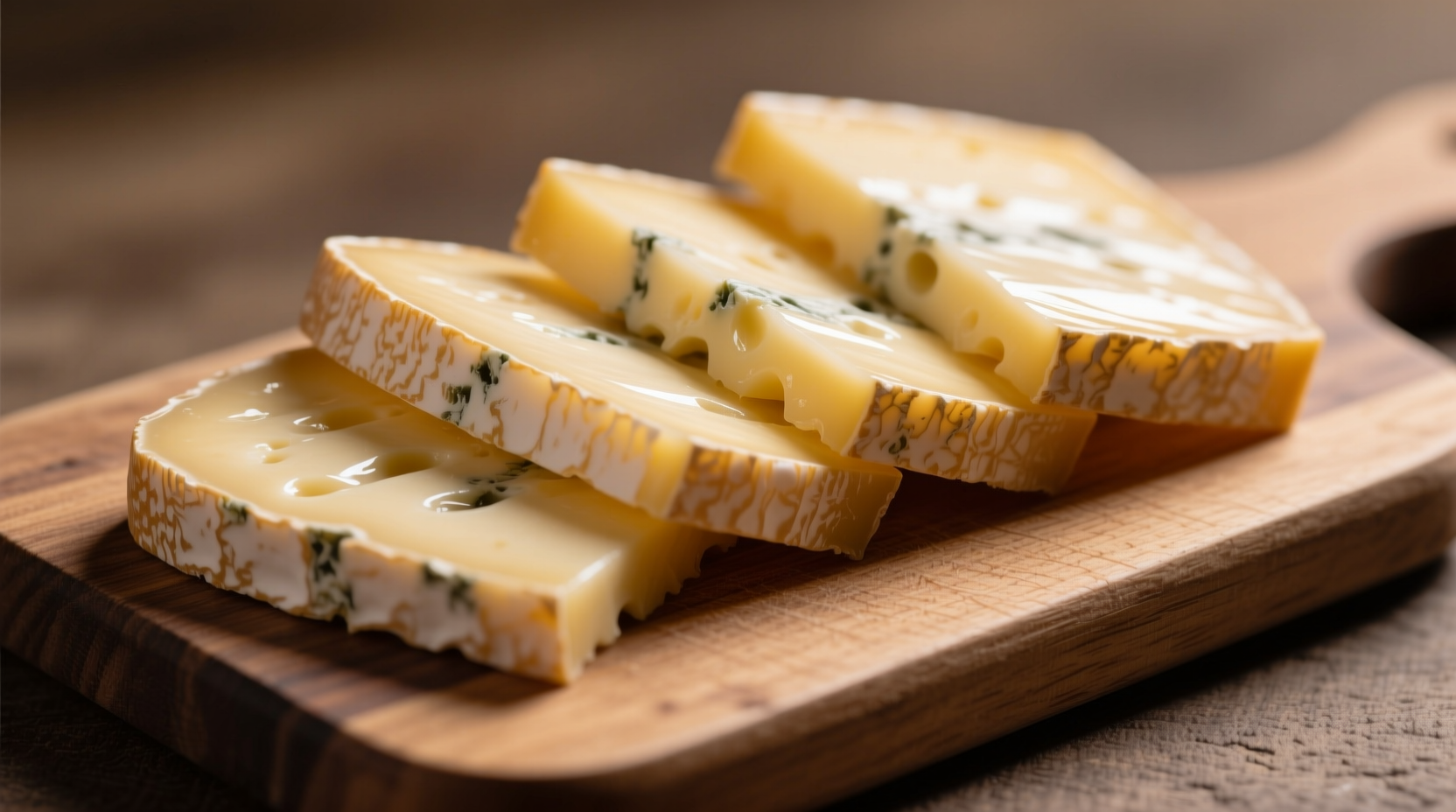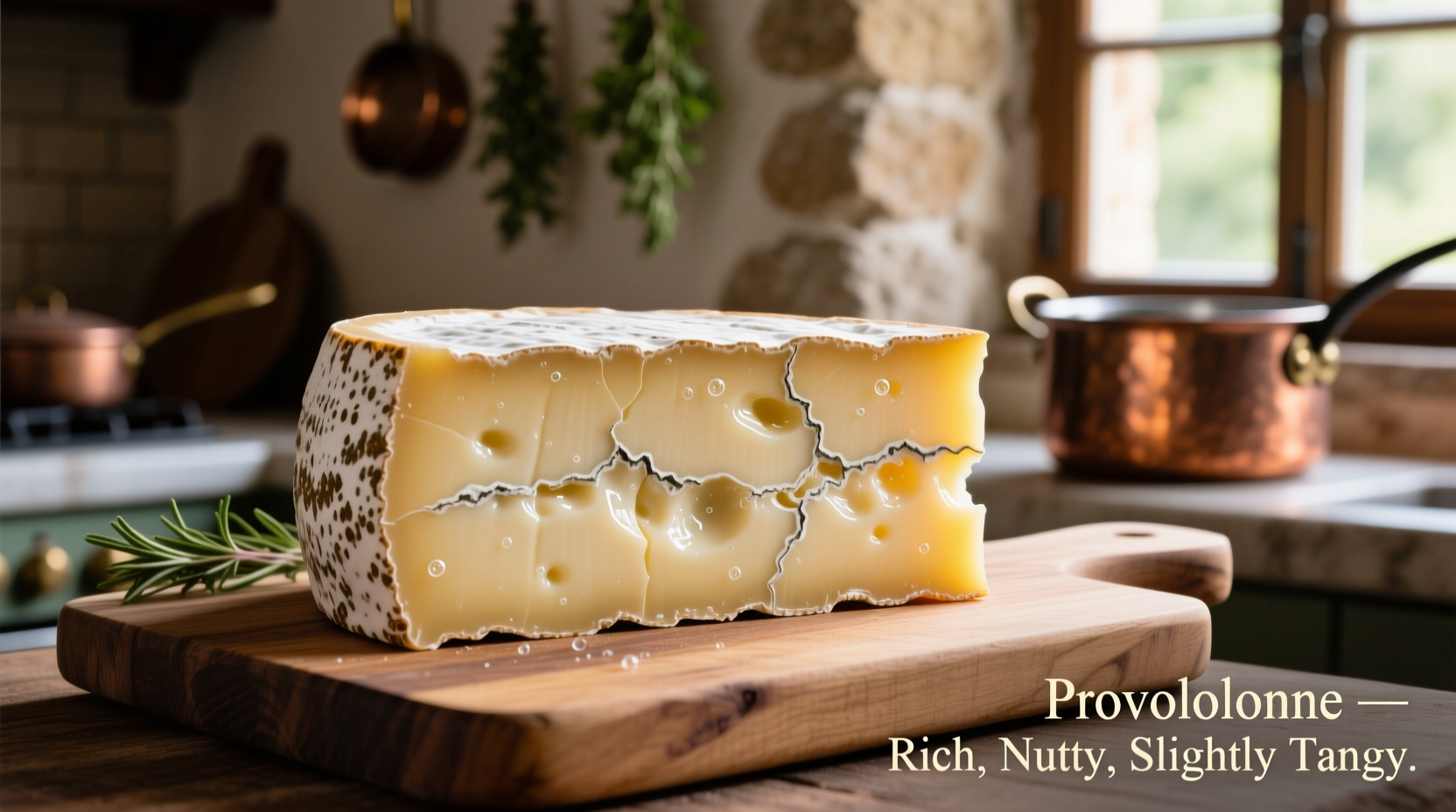Curious about what does provolone taste like in your next sandwich or pasta dish? You're not alone. This Italian-origin cheese has become a staple in American kitchens, but many home cooks still wonder how its flavor compares to more familiar options like cheddar or mozzarella. Understanding provolone's taste profile helps you make smarter culinary choices and elevate your dishes with confidence.
The Flavor Journey: How Aging Transforms Provolone
Provolone's taste isn't static—it evolves dramatically based on aging time. This transformation follows a clear timeline that directly impacts your cooking results:
| Aging Period | Flavor Characteristics | Texture | Best Culinary Uses |
|---|---|---|---|
| Fresh (2-3 weeks) | Mild, buttery, slightly sweet | Smooth, elastic, easy to slice | Cold sandwiches, caprese salads, pizza |
| Dolce (2-3 months) | Subtle tang, creamy notes | Firm but still pliable | Paninis, grilled cheese, pasta dishes |
| Sharp (4-12 months) | Pronounced tang, smoky notes, nutty undertones | Firmer, may develop small crystals | Charcuterie boards, robust pasta sauces, meat dishes |
According to the USDA Dairy Science Program, the aging process triggers enzymatic breakdown of proteins and fats, creating more complex flavor compounds. This explains why aged provolone develops those distinctive nutty, caramelized notes that younger versions lack.
Provolone vs. Similar Cheeses: Flavor Comparison
Understanding what does provolone taste like becomes clearer when comparing it to familiar cheeses. Many home cooks mistakenly think provolone is just "American cheddar," but the flavor profiles differ significantly:
| Cheese Type | Flavor Profile | Best For | Substitution Ratio |
|---|---|---|---|
| Young Provolone | Creamy, mild, slightly sweet | Cold cuts, deli sandwiches | 1:1 for mozzarella |
| Aged Provolone | Sharp, tangy, smoky, nutty | Robust pasta sauces, meat dishes | 1:1 for mild cheddar |
| Mozzarella | Very mild, milky, neutral | Pizza, caprese, fresh applications | Not ideal substitute |
| Cheddar (mild) | Buttery, slightly tangy | Burgers, macaroni, snacks | 3:4 ratio for aged provolone |
The American Cheese Society confirms that provolone's unique production method—where the curd is stretched and shaped (pasta filata)—creates a different protein structure than cheddar's pressing method, resulting in provolone's characteristic melt and distinct flavor development during aging.

Practical Applications: Using Provolone's Flavor Profile
Knowing what does provolone taste like helps you maximize its culinary potential. Unlike more neutral cheeses, provolone brings distinctive flavor that complements specific ingredients:
Perfect Pairings for Young Provolone
- Sandwiches: Balances salty cured meats like prosciutto without overwhelming them
- Pizza: Melts beautifully while adding subtle tang that enhances tomato sauce
- Pasta salads: Holds shape better than mozzarella while providing creaminess
Maximizing Aged Provolone's Flavor
- Grated over pasta: Adds depth to simple tomato sauces without competing with fresh basil
- With cured meats: Complements the saltiness of salami and pepperoni
- In meatloaf: Provides tangy contrast to rich ground beef
Food scientists at the University of California, Davis Department of Food Science note that provolone's pH level (around 5.2-5.4) makes it particularly effective at cutting through fatty foods, explaining why it works so well with rich meats and creamy sauces.
Shopping and Storage Tips for Optimal Flavor
Your experience with what does provolone taste like depends heavily on proper selection and storage:
- Check the aging date: Most packages indicate "dolce" (mild) or "piccante" (sharp)—choose based on your recipe needs
- Avoid pre-sliced options: These often contain anti-caking agents that dull flavor
- Storage matters: Wrap in cheese paper or parchment, not plastic wrap, to maintain proper moisture
- Bring to room temperature: Let sit 30 minutes before serving for fullest flavor expression
When stored properly, young provolone lasts 3-4 weeks in the refrigerator while aged provolone can maintain quality for 6-8 weeks. The USDA Food Safety and Inspection Service recommends storing cheese in the warmest part of your refrigerator (typically the vegetable drawer) to prevent temperature fluctuations that accelerate flavor degradation.
Common Flavor Misconceptions
Many home cooks wonder what does provolone taste like compared to other cheeses, leading to some persistent myths:
- Myth: Provolone tastes identical to mozzarella
Reality: While both are pasta filata cheeses, provolone develops more complex flavors as it ages - Myth: All provolone has a smoky flavor
Reality: Only traditionally smoked provolone (provolone affumicato) has noticeable smoke notes - Myth: Provolone doesn't melt well
Reality: Young provolone melts beautifully—aged versions may become stringy but still melt effectively
Understanding these distinctions helps you make informed choices when recipes call for provolone or when substituting other cheeses.
Frequently Asked Questions
What does provolone cheese taste like compared to cheddar?
Young provolone has a milder, creamier taste than mild cheddar with less tang. Aged provolone develops sharper notes similar to mild cheddar but with distinctive smoky and nutty undertones that cheddar lacks. Provolone generally melts more smoothly than cheddar, making it better for sandwiches where you want even cheese distribution.
Does provolone taste good on burgers?
Yes, provolone works exceptionally well on burgers, particularly aged varieties. Its sharp, tangy flavor cuts through the richness of beef patties while melting smoothly. The slight smokiness in many provolone varieties complements grilled burger flavors better than milder cheeses like American. For best results, use aged provolone and add it during the last minute of cooking to ensure proper melting without becoming greasy.
Why does some provolone taste smoky?
Traditional Italian provolone (provolone affumicato) is smoked over wood fires, giving it distinctive smoky notes. Many American producers skip this step for milder flavor, but specialty brands often maintain the smoking process. If your provolone has a smoky flavor, it's likely the smoked variety. Check the label for "affumicato" or "smoked" to confirm. The smoking process typically uses hickory, oak, or beech wood, contributing to the complex flavor profile.
How can you tell if provolone has gone bad?
Fresh provolone should have a clean, milky aroma with its characteristic mild or sharp notes depending on age. Signs of spoilage include: strong ammonia smell, excessive dryness or cracking, mold beyond surface level (small surface mold can be cut off), and sour or bitter taste. Properly stored young provolone lasts 3-4 weeks while aged provolone maintains quality for 6-8 weeks in the refrigerator. Always wrap provolone in cheese paper or parchment, not plastic wrap, for optimal freshness.
What makes provolone different from mozzarella?
While both are Italian pasta filata (stretched-curd) cheeses, provolone undergoes longer aging (minimum 2 weeks vs. mozzarella's days) which develops more complex flavors. Provolone has a higher fat content (45-50% vs. mozzarella's 40-45%) contributing to its richer taste. The aging process creates provolone's distinctive sharpness and occasional crystalline texture that mozzarella lacks. Provolone also melts differently—becoming creamier and less watery than fresh mozzarella, making it better for cooked applications.











 浙公网安备
33010002000092号
浙公网安备
33010002000092号 浙B2-20120091-4
浙B2-20120091-4